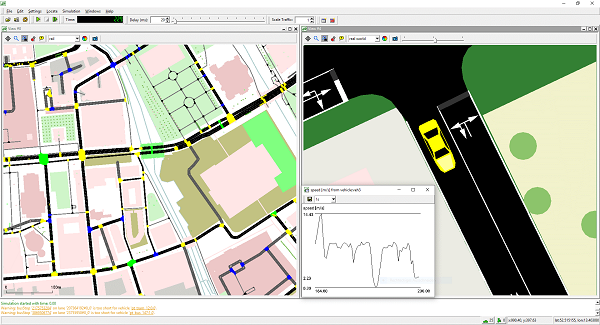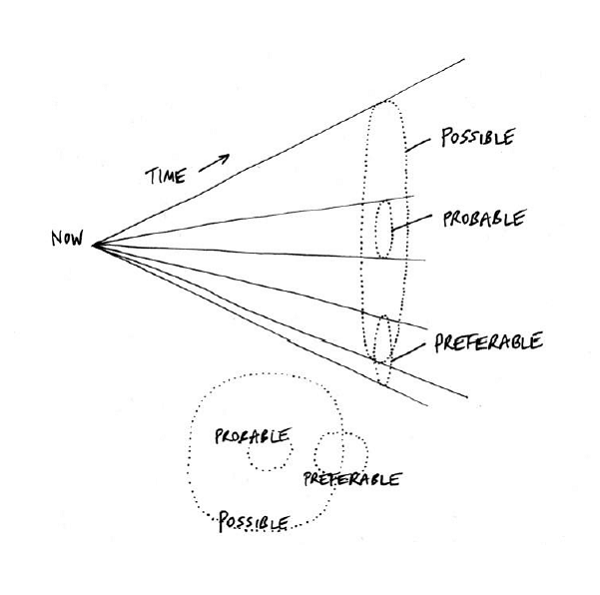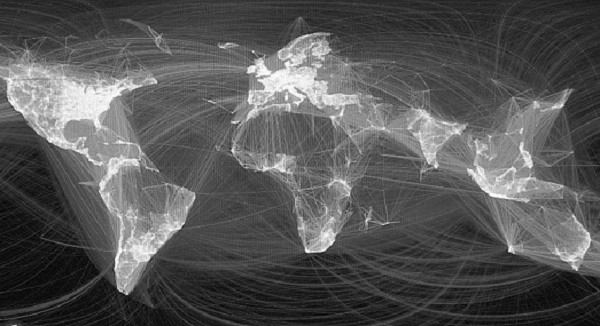Resilient Infrastructure and Our Efforts Towards Achieving It
R&D e-Symposia Webinar/World Cities Summit Partner Event:
Complexity Science for Resilient and Adaptable Cities
22 June 2021, 10am – 11am Singapore Time (GMT +8)
Panellists: Professor Michael Batty (Chairman and Emeritus Professor of Planning, CASA, University College London)
Dr Roman Carrasco (Associate Professor, NUS Department of Biological Sciences)
Mr Josef Hargrave (Director and Global Foresight Leader, Arup)
Moderator: Mr Huang Zhongwen (Director, Urban Redevelopment Authority, Singapore)
At the Urban Sustainability R&D e-Symposia webinar "Complexity Science for Resilient and Adaptable Cities", speakers shed light on how complexity science can help cities prepare for increasingly unprecedented and complex challenges that will inevitably disrupt our urban systems.

Figure 1: Speakers at the R&D e-Symposia webinar shared insights on the relevance of complexity science thinking and tools to the planning of future cities.
Cities as Unpredictable Systems of Systems
The multiple urban systems that make up a city evolve and interact with each other in not-so-obvious ways. To sustain Singapore as a great city to live, work and play, a wide range of needs must be met despite resource constraints. “We need new tools that can enable us to better navigate this increasing complexity and make more informed choices,” said Mr Huang Zhongwen.
Prof Michael Batty shared that cities are intrinsically unpredictable as they evolve with emergent behaviours from the bottom up. Such evolution enhances the city’s resilience because should any part of the city network break, bottom-up adaptations would allow for innovation and new ways to “heal” the breaks or disruptions. Adapting George Box’s quote that “all models are wrong but some are more useful”, Prof Batty suggested that when planning for the future, we need to recognise that “all predictions are wrong but some are useful”. Despite the unpredictability of cities, identifying generalisations about human behaviours from the bottom up is important for understanding how city networks and functions evolve to make cities more resilient.
The Dilemma of Modelling for an Unpredictable City
Despite the gap between models and reality, Dr Roman Carrasco shared that the “surprises” encountered in models can reveal previously unknown factors, even if we might never grasp real-life urban systems in full. It is only through the iterative process of modelling, with the help from domain experts, that we can refine models to gain a better understanding of cities. Mr Josef Hargrave also noted that cities must continually assess the usefulness of these models in decision-making. As he puts it, “It is really about enabling more useful conversations by leadership or by stakeholder groups and increasing our confidence in decision-making processes.”

Figure 2: Cities cannot be accurately modelled and predicted in totality, but urban modelling can provide planners with a perspective from which to observe the interactions between humans or agents and the urban systems. (Image source: Oabanse, Wikimedia Commons)
Understanding Human-Nature Relationships Using Complexity Science Dr Carrasco illustrated the practical use of data and complexity science through his research on understanding the demand and supply of ecosystem services in the context of climate change. Nature supplies ecosystem services such as green-blue recreational spaces for people’s health and well-being. Yet, climate change has disrupted the supply-demand equilibrium of ecosystem services by reducing the quality of nature spaces or affecting people’s demand for such services. In his words, we are “a liveable city under threat”.
He reiterated the value of using complexity science to study human behaviour, to better account for the dynamism in decision-making processes. “One way to adjust and to make sure that our interventions make the most of the scarce land that we have, is to consider the adaptive behaviour of people,” said Dr Carrasco. “I think it makes sense to start thinking in terms of the complexity of the system and how the system will adapt to the changes that we make to it.”

Figure 3: Complex systems modelling will need to account for people’s dynamic adaptations to changes in the supply of green spaces. (Image source: Yan Yanyun)
Towards a Regenerative CityTackling present-day challenges requires a paradigm shift on the transformation of complex systems, through integrated approaches across multiple components, actors and domains. “We need a big switch in terms of how we think about design, how we think about cities and also what our objectives and aims are, when it comes to sustainable development,” said Mr Hargrave. He emphasised how cities need to shift from minimising ecological losses, such as reducing energy consumption or carbon emission levels, towards maximising ecological gains, such as restoring ecosystems and moving towards regenerative cities.
Planning for regenerative cities requires a holistic understanding of planetary and human health. Through a case study of Shanghai’s urban drainage masterplan, Mr Hargrave demonstrated how complexity science, in conjunction with digital tools, could enable planners to develop optimised interventions at city-scale. He stressed the need to understand system complexity “because we cannot move into the future or explore the future without understanding the present state.”
A Post-COVID-19 FutureRecovering from the COVID-19 disruption will not be easy, with different cities facing their own unique set of challenges. “We are not yet out of the crisis phase, so the new equilibrium of live-work-play relationships of people living in urban environments is not yet clear,” said Mr Hargrave. This will likely be one of the biggest challenges in modelling the world. However, Mr Hargrave also highlighted how new hybrid working models are evolving, with implications on transportation, mobility, economy, human behaviour and the environment , as demonstrated by the increase in usage of parks and other nature areas during Singapore’s circuit breaker period. More importantly, we need to ensure that cities will be able to cope with more people spending time working from home, and to address new challenges such as ensuring that people are able to work comfortably and with peace of mind.

Figure 4: Modelling for future scenarios: The Cone of Plausibility graphically represents the relationship between the present moment and various alternative futures. (Image source: Arup)
Keeping Up with the Ever-Evolving CityCities are continuously evolving; the basic constraints faced in the past may no longer be relevant today. “Every problem has to be treated afresh,” said Prof Batty. We will need a science to generalise the development of cities, but we are still in the early stages of developing this. Data will be a key enabler, and social media and mobile phone data will give us the opportunity to follow and make sense of these complex behaviours. Most importantly, fostering and sustaining conversations and collaborations between domain experts will play a critical role in the way forward for a science of cities.

Figure 5: Social media data, such as Facebook, Twitter or Flickr data, are rich datasets that can enhance our understanding on human behaviours in space. (Image source: Prof Michael Batty, from Inventing Future Cities (2018), pg. 127)
If you would like to share with us any research ideas related to our speakers’ sharing/complexity science in general, do contact us at urban_sustainability@mnd.gov.sg. We would be glad to link up with you for further discussions.
Watch the full webinar at the World Cities Summit YouTube Channel at this link.
This report is reproduced with permission from the Centre for Liveable Cities Singapore. The original report can be viewed here.
Writers' Bios
 Tan Yi Xuan
Tan Yi XuanManager
Centre for Liveable Cities
Yi Xuan is a researcher at the Centre for Liveable Cities, focusing on Complexity Science for Urban Solutions, Sustainable Districts and Smart Cities.
 Sarah Wong
Sarah WongIntern
Centre for Liveable Cities
Sarah is an intern at the Centre of Liveable Cities, in the Complexity Science for Urban Solutions team. She is currently studying Engineering Systems Design in SUTD.
 Kay Lee
Kay Lee Intern
Centre for Liveable Cities
Kay is a former intern at the Centre for Liveable Cities and final-year student at Yale-NUS College majoring in Urban Studies. Her interests lie in the intersection between Complexity Science and the social life of cities.
For further enquiries, please contact us here.